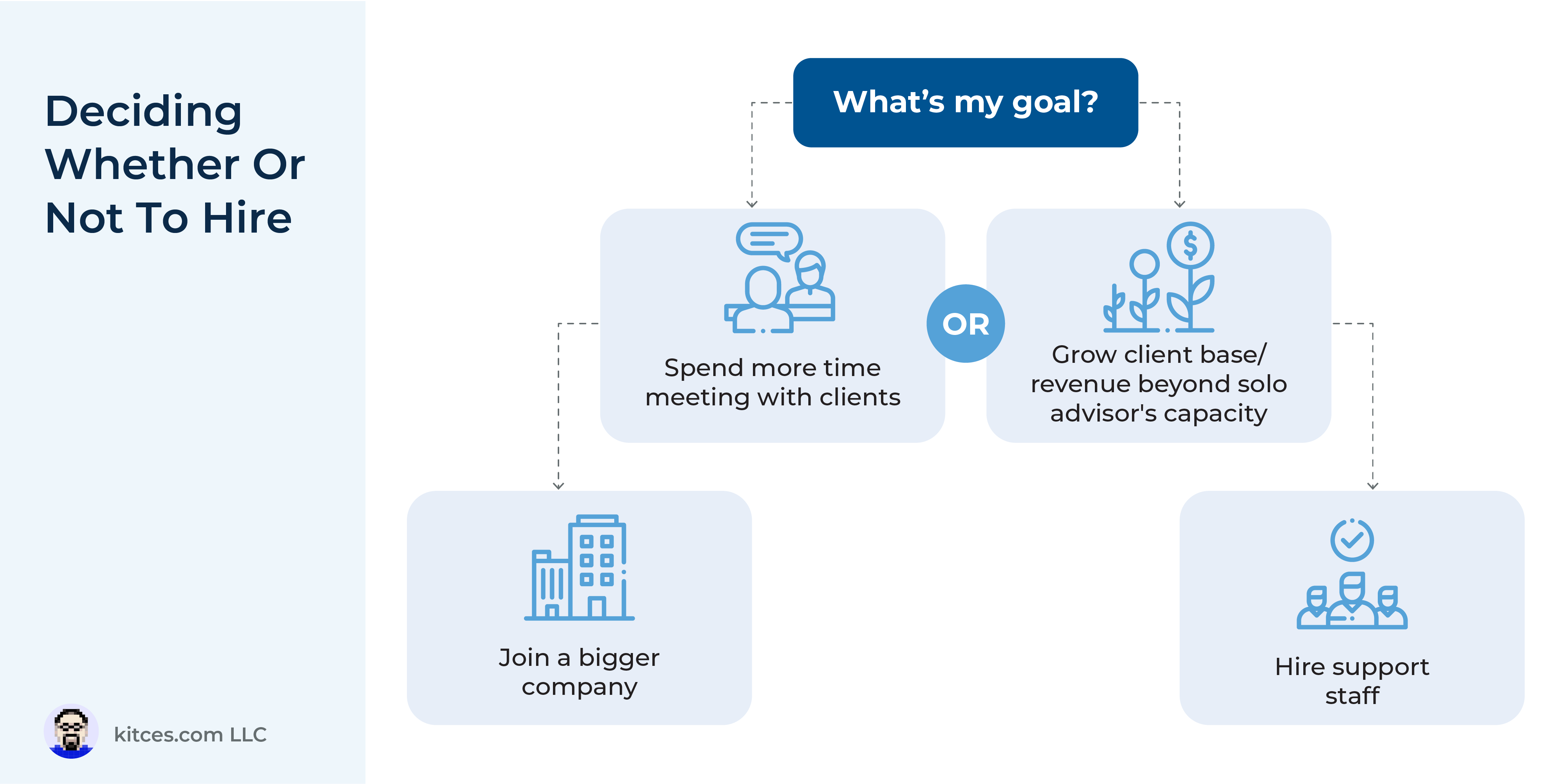When an advisor runs their own solo advisory firm, their capacity to meet with current and prospective clients is limited to the extent that they are also responsible for all of the non-client-facing tasks of running their firm. Which may not be a serious limitation when they are just starting out and don’t have a lot of clients to serve, but as the firm grows, they will eventually run out of time available for working with clients – at which point, it becomes necessary to decide whether to stay a solo firm (without taking on more clients) or to hire support staff to free up more time for the advisor/owner to prioritize client work and optimize advisor capacity.
Advisors who have never hired before may have little idea of what to expect once they do decide to hire. Will they be able to support themselves with the additional overhead cost of their employees? What type(s) of employee should they hire? Will they actually get to spend any more time working with clients, as was the original goal?
Data from the 2022 Kitces Research Study on “How Financial Planners Actually Do Financial Planning” provide some answers about what advisors can expect when going beyond a solo practice, shedding light on the impact that hiring has on advisor capacity. According to the study, solo firms with no employees had a median of just 40 clients per advisor, while 2-person firms had 70, and 3-person firms had 96, as the advisor leverages themselves and their time by building a support team of a Client Service Associate (CSA) and an Associate Advisor around them. Notably, though, at 4 employees and beyond, the number of clients per lead advisor tends to go down from its peak of 96, as teams at this size typically begin to add another lead advisor. In other words, a 3-person team really seems to be the sweet spot where advisors are able to maximize their capacity, meaning that solo owners who want to hire 1 employee to focus more on client-facing work perhaps really ought to consider hiring 2 instead – while those who are already on a 3-person team might want to think twice about going much farther beyond that!
Additionally, while many firms tend to first hire a Client Service Associate (CSA) as their first hire and add an Associate Advisor later as their second, the actual job description of an initial hire really depends on what types of tasks the advisor wants and needs to delegate first – which in practice tend to be some of the advisor’s least-favorite work (hence why the CSA’s paperwork-heavy duty often gets delegated first), but can mean that an initial hire can really be more of a hybrid role, growing into one that is more specialized as the advisor delegates more and more tasks as the firm continues to grow. And to some extent, the needs of the first hire will vary depending on what the advisor themselves is good at doing (e.g., advisors who struggle with paperwork may hire a CSA first, while those who excel at building systems and process may hire the Associate Advisor first, and later a CSA to leverage them both).
Ultimately, what’s most important for advisors looking to hire is to have a plan for growth since the significant overhead cost of employees can greatly erode a firm’s profits until it can add enough revenue to make up the difference. Fortunately, what the data show is that hiring can open the door for this growth by boosting the advisor’s capacity and (as is presumably the primary goal) giving them the time to meet and bring in new clients!Read More…


